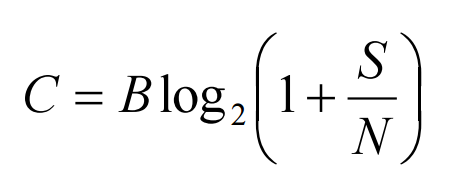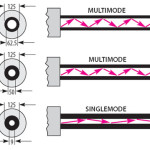It is important to know the maximum speed that any network can provide, either now or in the future, because bit-rate requirements are growing and choices made today will affect the technical capabilities of the network tomorrow. Although it is difficult to predict the future, Nielsen’s law of Internet bandwidth described earlier provides a guide to future bit-rate requirements.
A combination of factors determines the speed or bit rate achievable on the network. The transmission medium is one of the most critical factors – the type of cable, its length and layout will determine the theoretical maximum speed. The choice of electronic equipment determines the actual maximum speed as well as the number of subscribers on a port.
The Shannon Limit
Every transmission medium has a physical bandwidth limitation, which can be determined using the Shannon–Hartley theorem.
As stated by Claude Shannon in 1948, the theorem provides a means to calculate the maximum achievable bit rate over a transmission medium as a function of the frequency-specific signal-tonoise ratio (SNR) values. The following formula defines the maximum channel capacity C:

where:
C is the channel capacity in bits per second (bps),
B is the bandwidth of the channel in Hertz (Hz),
S is the average received signal power in Watts (W),
N is the average noise power in W,
S/N is the signal-to-noise ratio expressed as a linear ratio (not logarithmic scale in decibel, dB).
The maximum theoretical capacity of a communications channel, as determined by this equation, is called the Shannon Limit.
The SNR decreases with increasing attenuation (the gradual loss of signal intensity as the signal travels along the medium) and crosstalk (noise from interfering signals). Conversely, reducing crosstalk or ttenuation can increase SNR and channel capacity. As attenuation accumulates rapidly over distance, the length of the copper cable is a significant constraint.
The aim of developing new transmission technologies is to move closer to the theoretical channel capacity given by the Shannon theorem. Improvements can be made by developing more efficient modulation schemes to encode the data, or reducing the impact of crosstalk.








